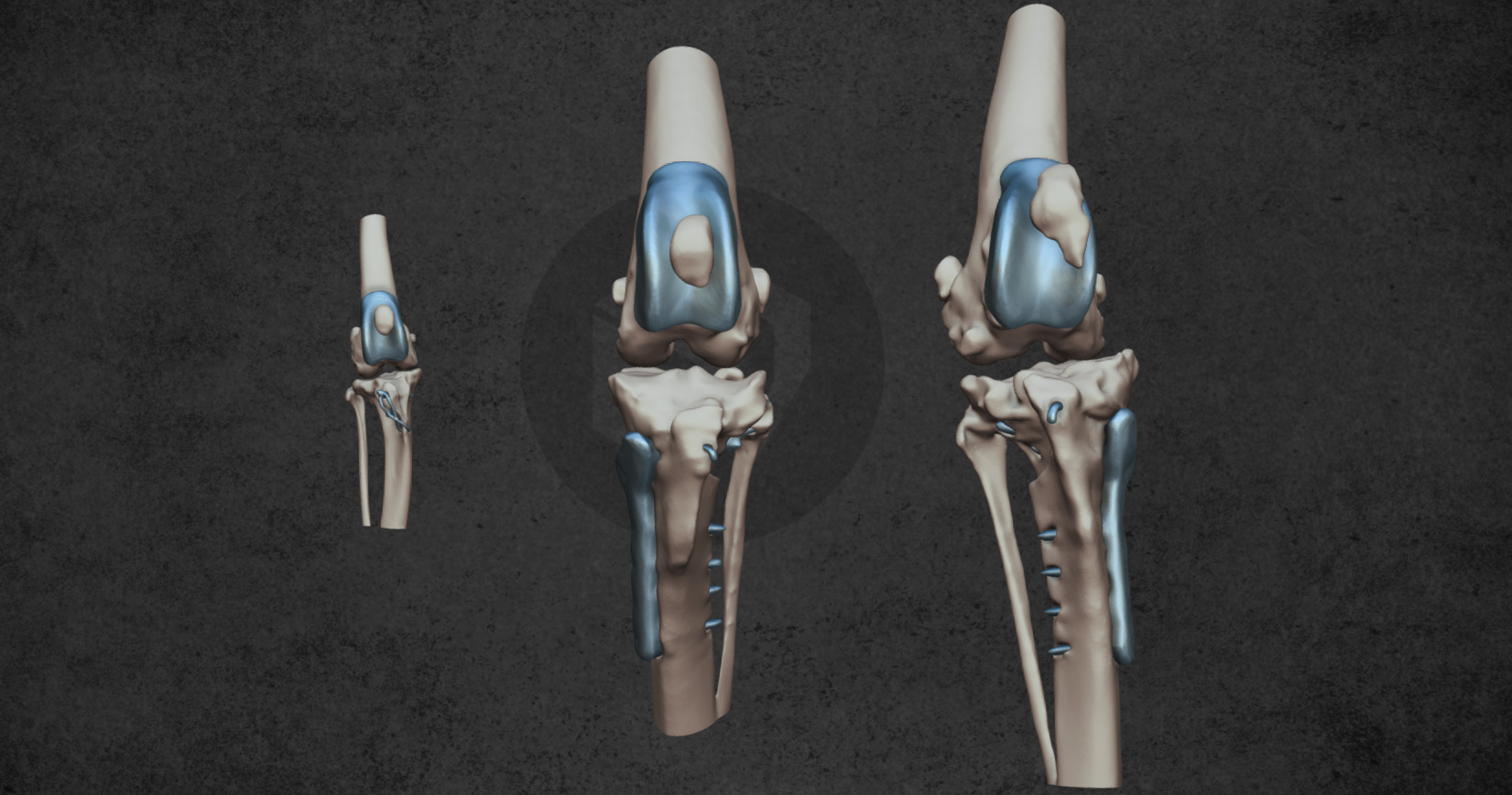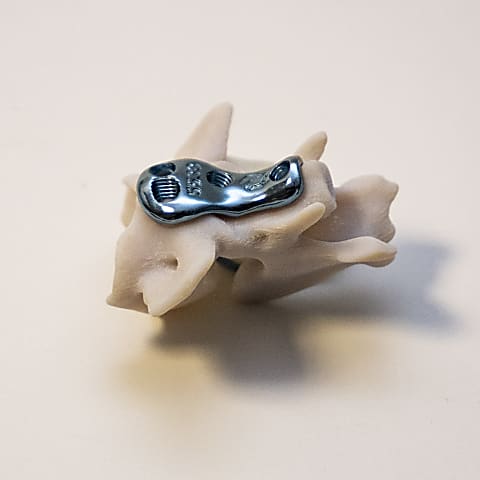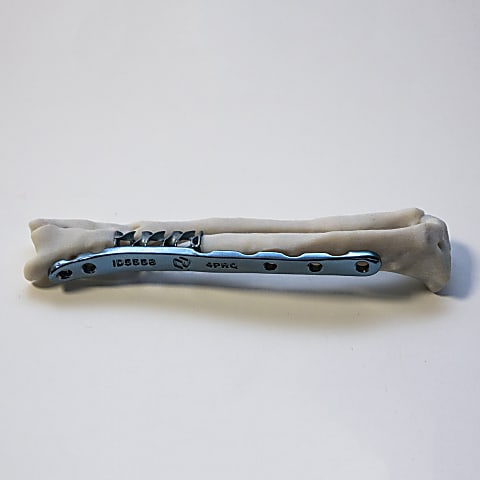In modern veterinary surgery, the combination of 3D-printed and traditional implants is gaining more traction, allowing surgeons to select the optimal solution based on the specifics of each case.
This hybrid approach is particularly beneficial in managing complex orthopedic conditions, where the combined use of standard implants and custom 3D-printed devices can enhance surgical outcomes and improve patient recovery.
Advantages of 3D-Printed Implants
3D printing technology has revolutionized the design and production of medical and veterinary implants, offering several advantages over traditional methods.
- Customization and Precision: 3D printing enables the creation of implants tailored to an individual animal’s anatomical characteristics. This is particularly important in cases where standard implants do not provide a perfect fit or optimal functionality. Custom-designed implants that match the bone surface improve surgical outcomes and reduce the risk of postoperative complications.
- Innovative Approaches: 3D printing allows for the development of complex geometries and specialized surface textures that promote bone growth and integration. Additionally, unique solutions can be designed that would be difficult or impossible to manufacture using conventional methods.
The Role of Traditional Implants
Traditional, standard implants have been used for many years, providing reliable solutions in numerous cases. Their advantages include:
- Wide Availability and Quick Application: Standard implants are easily accessible in a variety of sizes and shapes, making them a convenient choice, especially in urgent cases.
- Proven Techniques and Long-Term Results: The use of traditional implants is well-documented, with long-term clinical outcomes that inspire confidence in both surgeons and patients.

A Practical Example of Using Standard and 3D-Printed Implants Together
A Central Asian Shepherd dog named Luna suffered from two orthopedic issues in her left knee joint:
- Cranial cruciate ligament (CCL) rupture
- Medial patellar luxation
Due to the simultaneous presence of both conditions, the surgeons decided to treat them in a single procedure by combining different technologies.
The TPLO (tibial plateau leveling osteotomy) technique was used for the treatment of the CCL rupture, which is a well-established method for biomechanical stabilization of the knee joint.
For this procedure, standard implants were used to meet general surgical requirements.
However, for the correction of the patellar groove, a CT scan was used to model the affected bones, allowing for the creation of a custom 3D-printed TROCA patellar groove prosthesis that precisely follows the unique contours of the bone surface.
The TROCA prosthesis, made of a special titanium alloy, was designed with high precision to perfectly fit the surface of Luna’s bones and help prevent future luxations.
Why Was This Hybrid Solution Effective?
- The TPLO technique and standard implants provided fast and reliable biomechanical stability.
- The custom 3D-printed patellar groove prosthesis ensured a precise fit, effectively preventing further complications.
- Two major problems were solved with a single surgery, leading to a faster recovery.
The surgery was successful, and Luna soon regained full use of her operated leg, demonstrating the benefits of a well-planned intervention.
One of the greatest advantages of using both traditional and 3D-printed implants is that there are no size limitations—thanks to personalized, custom-designed solutions, the technology can be applied to patients of nearly any size, from a Yorkshire Terrier to a Moscow Watchdog.
The Most Important Goal: Finding the Best Solution for the Patient
Our goal is to apply the most advanced technologies in veterinary care to provide innovative solutions.
Our product range includes the latest 3D-printed implants, prostheses, and surgical guides, which enhance the efficiency and safety of surgical procedures.
The case of Luna illustrates how combining traditional and 3D-printed implants can revolutionize veterinary surgery.
While standard implants offer proven biomechanical stability, custom 3D-printed components allow for precise, personalized solutions, ensuring perfect fit and long-term success.








